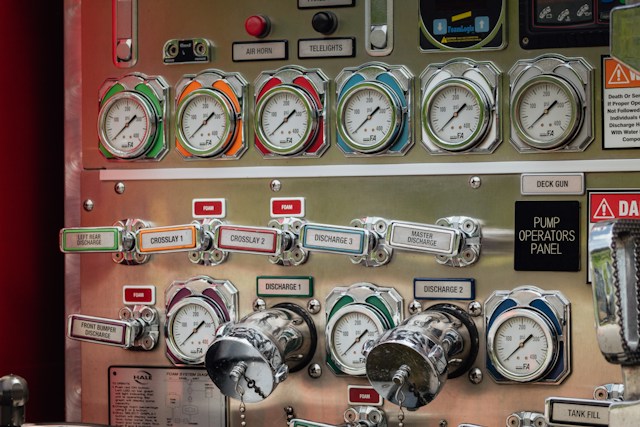Using Pascal’s law, hydrostatic test pumps subject materials and systems to elevated pressures to detect potential weaknesses. They are used to test fire extinguishers, cylinders, and pipelines, among other things. Most electric pumps come equipped with long lengths of electrical cord that allow the pump to be moved easily from place to place. This convenience makes it easier to conduct tests in various locations.
Hydraulic Pumps
The basic requirements of a hydrostatic test pump involve its maximum pressure in PSI and flow rate in GPM, as well as its power source (gas, electric, hand, or drill). Contractors may also select a model that includes a gauge filled with liquid, a feature that helps stabilize the needle, limits condensation, and lubricates moving parts for more efficient operation. The pressure is gradually increased until it reaches the desired level, and it’s maintained for a specified time to allow any leaks or weak spots to be detected. Once the specified time has elapsed, the pump is shut off, and the system is disconnected. Some models use aluminum parts to keep weight down and corrosion resistance up, while others rely on more traditional materials. Regardless of construction, the pumps should be easy for contractors to move around job sites and operate. This typically means rear-facing controls with convenient access to the discharge and high-pressure hoses.
Pressure Gauges
The pressure build-up generated by hydro testing exposes any weak spots and structural flaws that the system might otherwise conceal. As the test fluid fills and builds up to the designated pressure level, these flaws become apparent in the form of leaks and other defects that indicate a material’s inability to withstand the design pressure safely. These flaws can be difficult to spot during a visual inspection but can easily be detected by a hydrostatic tester appropriately calibrated. Calibration requires a reference or master gauge to serve as a benchmark against which all other gauges are measured and involves incrementally applying pressure while comparing readings on both the test and calibration gauges. Some hydro testers rely on engine-operated pumps for hydraulic pressure, although battery or plug-in electric-powered pumps offer more portability and flexibility than engine-powered units. Regardless of which type of pump you choose, ensure it meets the power requirements noted in its operating manual, including voltage, phase, hertz, and amperage.
Pressure Regulating Valves
The pressure regulating valve prevents the pump from reaching and exceeding its maximum capacity. When the system pressure falls below this point, a spring retracts and closes the valve to stop fluid leakage. This valve also reduces flow by diverting some water from the test line to a bypass port, minimizing entrained air and pump cavitation. Many applications require a specific pressure but don’t need to maintain it continuously. In these cases, pressure-regulating valves prevent over-pressurization. Transfer and metering systems are good examples of this. Test pumps powered by batteries or plug-in electric motors differ in size and weight. Those that use aluminum parts help keep weight down and corrosion resistance up. This allows contractors to move them around job sites quickly, as well as minimize the risk of accidental spills or damage. Additionally, some models come with long lengths of cord that allow them to reach power sources in parked vehicles or other locations.
Safety Features
In addition to generating high-pressure fluids, hydrostatic test pumps also incorporate safety features that prevent accidental over-pressurization during testing. This helps protect the pump operator and the object or pipeline being tested from damage caused by sudden depressurization. When performing a hydrostatic test, it’s essential to follow the manufacturer’s recommended test procedure and carefully monitor pressure changes throughout the process. This allows for close observation of potential anomalies and ensures accurate results. It’s also vital to document the entire testing process, including notes on any unexpected observations or findings. To begin, make sure the pump is correctly connected to your system. Check the system’s hoses, filters, and inlet fittings for obstructions that may affect the ability of the pump to create adequate pressure. Then, turn on the pump and watch the gauge and the pipes to monitor system pressure. Gradually increase the test pressure, stopping if you see signs of leakage or other anomalies.

